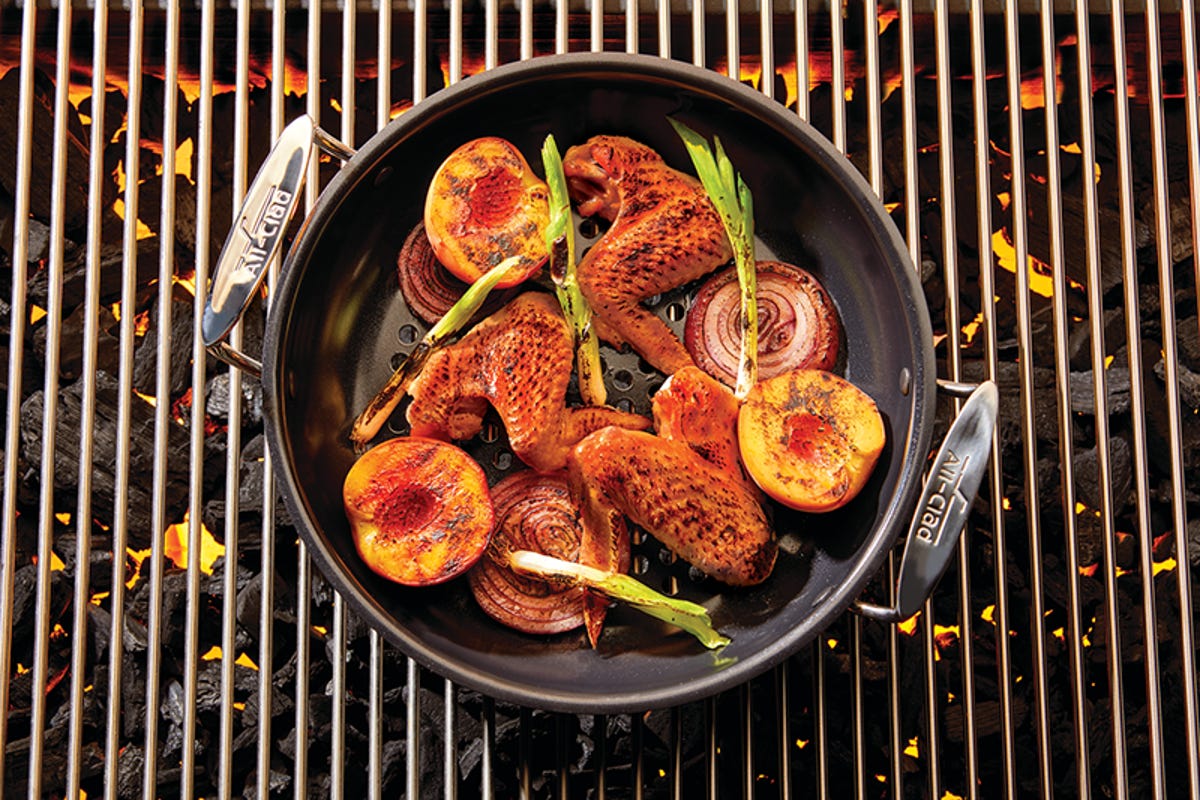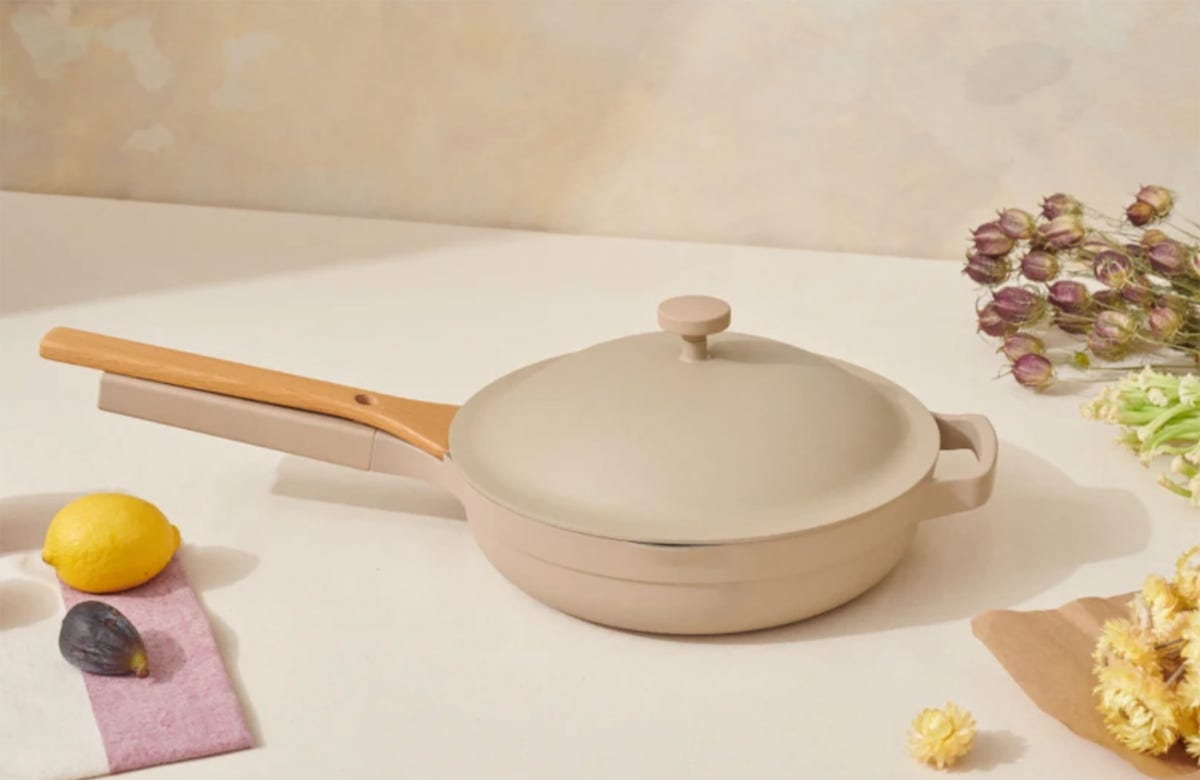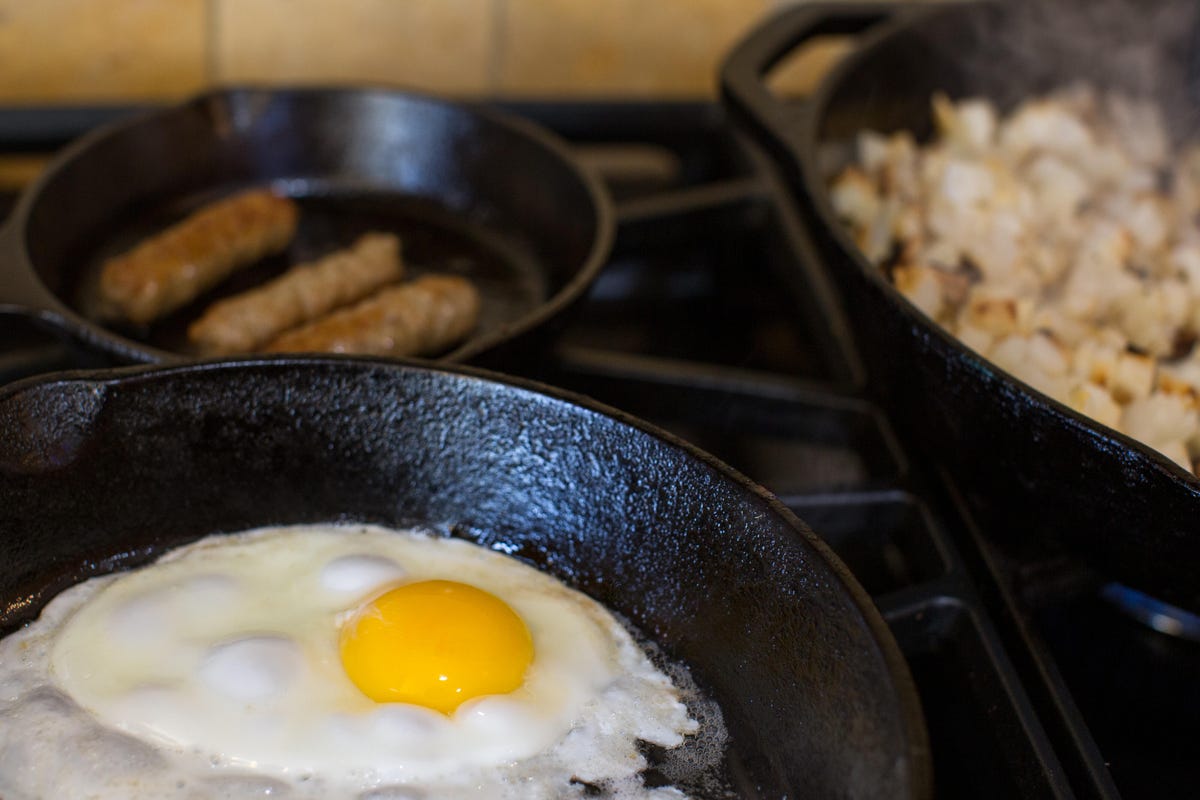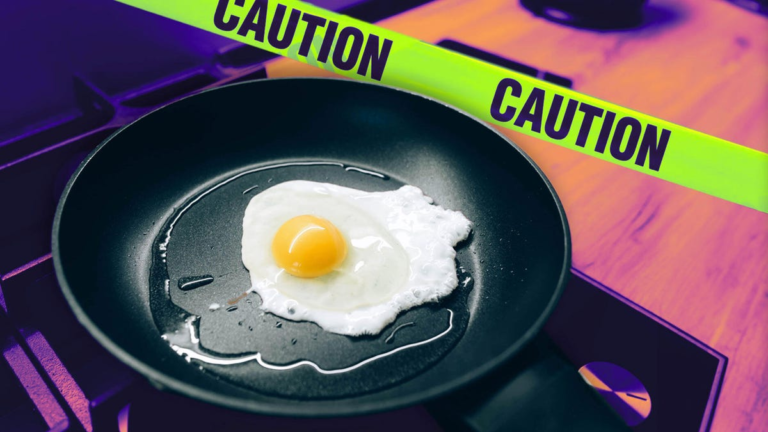The Washington Post reports a recent surge in cases of an illness linked to the use of Teflon cookware known as “Teflon flu,” a reference to the trademarked chemical used in the popular Teflon coating, with more than 250 cases reported in the past year, the most since 2000.
So what is Teflon Full, and are Teflon-coated pans safe to use? As long as the pan was made after a certain year and has been used properly, the answer is most likely yes.
What is Teflon Flu?
Polymer smoke fever, or “Teflon flu,” has reignited the debate over the safety of non-stick cookware. The illness is caused by inhaling fumes from overheated Teflon or non-stick pans. Non-stick pans are made from polytetrafluoroethylene (also known as PTFE), known as the “forever chemical” because it takes decades, even centuries, to break down.
Under normal use, PTFE is not thought to pose a health risk, but when heated above 500 degrees F, emissions increase and polymer fume fever occurs. Polymer fume fever has been reported to cause a variety of symptoms, including fever, chills, muscle tension, and headaches. Teflon flu symptoms are temporary and usually begin within 12 hours of exposure, but it may take up to 24 hours for symptoms to appear.
How to prevent the Teflon flu
Teflon and nonstick cookware are easy to use, clean and maintain, but they should only be used for cooking on low to medium heat. Do not heat nonstick cookware on high or medium heat for extended periods of time. Ensure that the surface temperature remains above 450 degrees F. Failure to do so may increase emissions from the PTFE coating.
What is Teflon and does it cause cancer?
Teflon-coated pots and pans are a popular choice for home cooks. The great thing about Teflon-coated pots and pans is that food doesn't stick to them like it does to other metals. This makes it easy to flip pancakes or pop out boiled eggs. Teflon-coated pots are also super easy to clean, usually taking just a few seconds to wash by hand.
Teflon is the brand name of a synthetic chemical called polytetrafluoroethylene, which is used in many household products, from electrical wire coatings to fabric protectors to kitchen cookware. The downside to Teflon is that it is not safe if ingested or absorbed into the body, increasing the risk of cancer and other diseases. Although studies have shown some associations (more on that below), Teflon is still around today and is used to make cookware, but safety concerns about Teflon are largely a thing of the past.
And I emphasize generallyHere’s why…
Although the brand Teflon may be associated with cancer risk, it is actually a chemical. Previously Used in the manufacture of Teflon PFOA Here's why: Perfluorooctanoic acid is a man-made perfluorinated chemical developed in the 1930s that's used to make fluoropolymer coatings and products that resist heat, oil, dirt, grease and water, according to the Centers for Disease Control and Prevention.

Due to a federal ban, all Teflon and nonstick cookware manufactured after 2013 should be free of harmful PFOA. A similar ban was enacted in Europe in 2008.
What are the harmful effects of PFOA?
Several studies have linked PFOA to cancer, immune deficiencies and many other medical problems. It has also been shown to affect growth and development and damage the liver in laboratory animals.

As recently as 2017, chemical giant DuPont settled lawsuits for more than $670 million for contaminating drinking water in the mid-Ohio Valley with PFOA, also known as C-8, a chemical that was brought in a 2004 class-action lawsuit in the same region after research showed that even small amounts of PFOA could lead to cancer and weaken the immune system.
Teflon cookware made before 2013 may be toxic
As a result, most manufacturers stopped producing non-stick coatings that used PFOA around 2002. However, Teflon, which used PFOA, was not officially banned in the United States until 2014. It was banned in Europe in 2008. If you have Teflon-coated cookware made before 2013, it may contain PFOA.Nine years is usually longer than the average lifespan of a Teflon-coated pan, but if you're unsure, it's best to replace your Teflon-coated pots and pans.
If you're concerned, look for PFOA-free cookware.
The ban should mean that all nonstick cookware manufactured in the United States is PFOA-free, but it's a good idea to check to be sure. Be especially careful when purchasing inexpensive or non-branded cookware, especially if it wasn't made in a country with a PFOA ban in place. PFOA is still produced in other countries, primarily China, and is used to make consumer products.
The good news is PFOA-Free Nonstick cookware is cheapSo there's no reason to take a risk with something that may contain chemicals. You can get a 10-inch frying pan from a trusted cookware brand. Misen $33 Or Tramontina It's about $25. All-Clad is a luxury cookware brand. 2-Piece Nonstick Cookware Set ($50).

The Always Pan is a non-stick ceramic cookware alternative to Teflon cookware.
The Best Natural Nonstick Cookware Alternatives
If you're ready to ditch your Teflon and chemical-based nonstick pots and pans entirely, there are plenty of more natural nonstick alternatives.
The least likely to burn Ceramic CookwareIt has seen a surge in popularity since concerns about Teflon first emerged. Popular ceramic cookware includes: Always Pan (my Read the full review here), Caraway and Green Pan.
cast iron It's a cookware material that develops a natural non-stick coating over time. Season well and Proper CareWhile it may not offer the same nonstick properties as Teflon, cast iron offers a variety of cooking benefits that make it worth a few extra seconds of scrubbing in the sink after use. Lodge is a tried-and-true cast-iron cookware manufacturer. 10-inch frying pan Starting at just $24.

Cast iron develops a non-stick patina over time, making it a natural alternative to Teflon.
Carbon steel Cast iron cookware performs similarly to cast iron cookware, but is less heavy, a little more susceptible to corrosion, and usually more expensive. Carbon steel is less common in the U.S., but is popular with professional chefs and chefs like me. Cookware startup Made In offers a selection of excellent Blue carbon steel The pans cost around $80, but there are cheaper options available.


